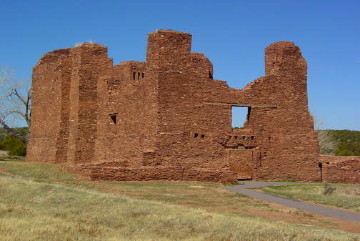M. and I got in the new Jeep, headed up the "secret cutoff" and came over the mountains and down to Taos for a couple of days.
There is always a nostalgia component for me here, dating back to the summers in college when I worked on what you might call the Poets & Writers adobe-bricklaying crew in the early 1970s.
I had a foot in two worlds: by age, I fit in more with the younger hippies. But the people I worked for and lived with were more part of the older Taos bohemia. And there was a chasm between the two.
The older bohemians were artists, writers, etc.--or else they worshipped at the shrine of Art. As the photographer Mildred Tolbert said of her arrival in the late 1930s after a Texas ranch girlhood, "I guess I was just another misfit coming to Taos."
This older group had plenty of wildness: heavy drinking, "alternative lifestyles," etc., but they were more discreet. Often childless, they usually were not involved with the fabric of the community: churches, schools, and the incestuous and nepotistic local politics. They usually treated the locals politely because they needed them. If they followed the D.H. Lawrence approach, they treated the Indians from Taos Pueblo (at least those Indians savvy enough to play the art game) with exaggerated respect. There was actually a lot of out-of-state money here, but it blended in.
The hippies, on the other hand, arrived full of a different set of Psychedelic Wild West fantasies, plus the usual paradisaical utopian fantasies (often involving removing clothing), plopped down in the midst of largely Catholic, socially conservative, and patriarchal northern New Mexico. There were, shall we say, conflicts. Sometimes shots were fired--both directions. The Psychedelic Wild West fantasy included lever-action carbines as well as LSD.
The writer
Anna Cypra Oliver covers some of this terrain in her memoir
Assembling My Father. Her parents were part of the older hippie group--she and I reckon we must have passed each other often on Maestas Road in Talpa, me a longhair driving the boss's pickup, her a little girl.
And that era passed, and the New Agers arrived in greater numbers (they had been here all along, of course, since the 1940s, at least), and the river-rafter/mountain-biker types, and now, to my surprise, Taos is attracting upper-middle class retirees in greater numbers. Even the incestuous nepotistic politics are changing, some. The Indians, of course, now have a
casino, which advertises itself to be New Mexico's only smoke-free casino. You can buy Thai and "rustic French" meals in restaurants. Art galleries outnumber bars and churches combined.
There are still social conflicts and divisions, but I haven't heard of any shooting. Taos has just become more like Bozeman or Durango or many places in other countries too where the lure of beauty and some sort of spiritual atmosphere attracts first the bohemians and adventurers and then the people of money. But that's the dirty little secret: Bohemia requires people of money to sustain it. Someone has to buy the paintings. Someone has to leave money to their descendents so that said descendents can afford to work in art galleries for next to nothing. Someone has to hire the adventure-tourism guides. There is no point in pretending otherwise.
Now we're not looking for "spirituality." We are more interested in the latest book on Southwestern gardening at Moby Dickens or the guy selling oshá from the back of his pickup truck.
Labels: New Mexico


 And then she began to devote herself full time to some very interesting research in the anthropological reconstruction of shamanism, culminating in the publication of her book Where the Spirits Ride the Wind: Trance Journeys and Other Ecstatic Experiences (Indiana University Press, 1990). Get it if you can, perhaps through some service like
And then she began to devote herself full time to some very interesting research in the anthropological reconstruction of shamanism, culminating in the publication of her book Where the Spirits Ride the Wind: Trance Journeys and Other Ecstatic Experiences (Indiana University Press, 1990). Get it if you can, perhaps through some service like 


